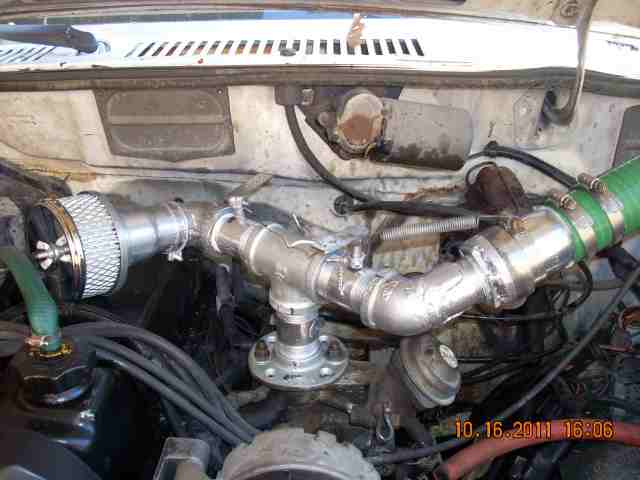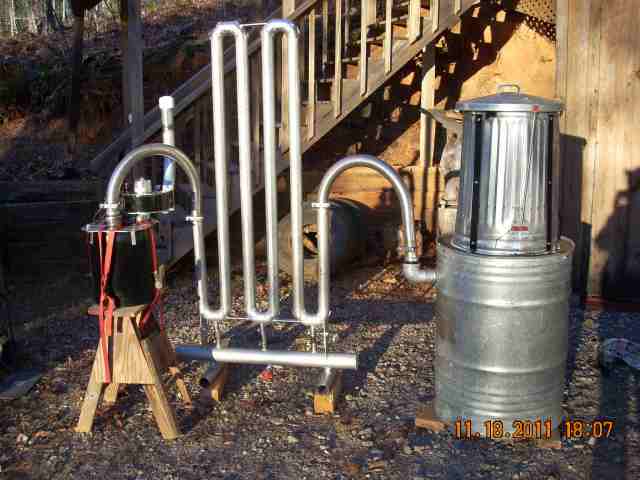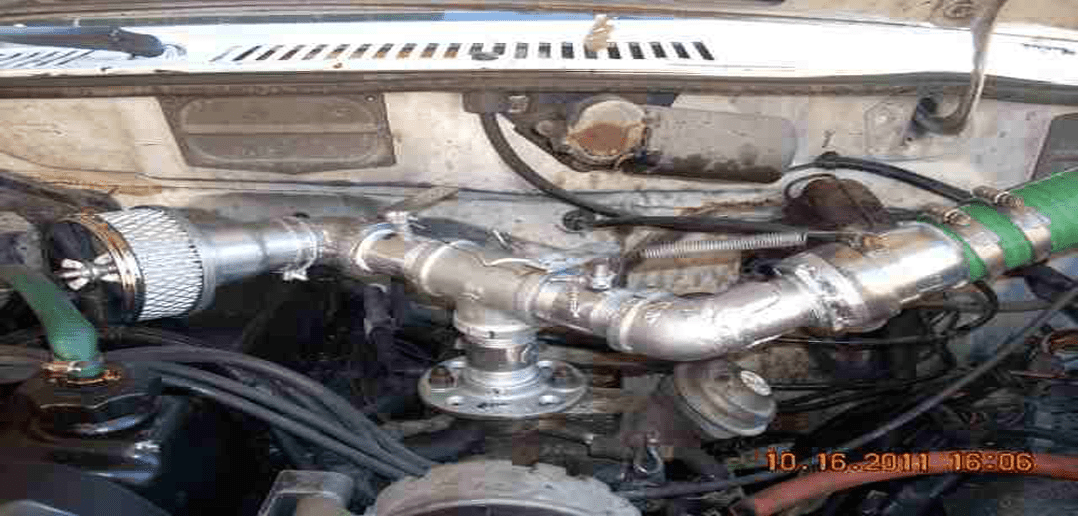FEMA Gasifier Design
In the United States, Zeb from Blairsville, Georgia, built his unit based on the basic FEMA gasifier design.
Zeb says, “My ground rules were to use standard materials, keep the project low-tech, and build with tools normally found in an advanced home workshop or farm workshop. The basic materials are old containers, garbage cans, and EMT (electrical) conduits. The water separator and inner cooler is a standard home workshop air supply sized up for a gasifier’s low-pressure gas flow.”

Saved from the clunkers crusher project, the vehicle had some repairs and fixing, but it had a carb and adjustable timing. A conventional distributor is retrofitted if EMP events are concerning.
The unit produced an impressive flare at the last fire-up. Coupled to the old Ranger for a try at running it on wood gas. I’d like to know how the FEMA gasifier design produced sufficient quality gas for use. My original attempts with this FEMA gasifier design, i.e., without the cooler, would not sustain a flare.
I live in the southern Appalachians and burn everything from wood blocks to pellets, charcoal, and sticks. I see a future for wood gas in stationary applications. The alphabet soup of OSHA, EPA, etc., will probably quash any positive movements toward highway use.

FEMA GAS Design – Carbon Monoxide
An added note here concerns the danger of the carbon monoxide created in this process. As a retired aerospace, I focus on this issue in great detail. I visual all connections and joints at each shutdown for escaping gas and sealed all leaks before the subsequent fire-up. Based on data, a typical gas producer emits 22 times the lethal dose of CO during its shutdown period.
My FEMA gasifier design does not have a shut-off exit. This is a must-do before the vehicle goes on the road. The vehicle shut-down will unseal the flare tube, shut the exit valve, and let the engine run to stall. This action purges the system downstream of the actual cooler and burner. Due to carbon monoxide poisoning, many people returned to using gasoline after the war.
You might want to check out an old truck that ran on charcoal.

